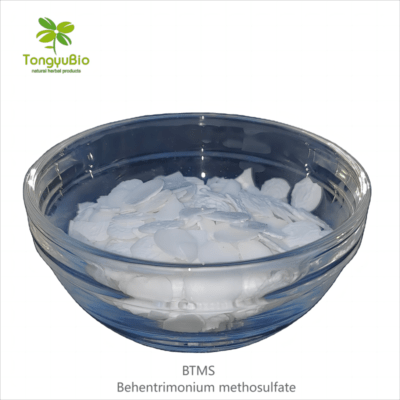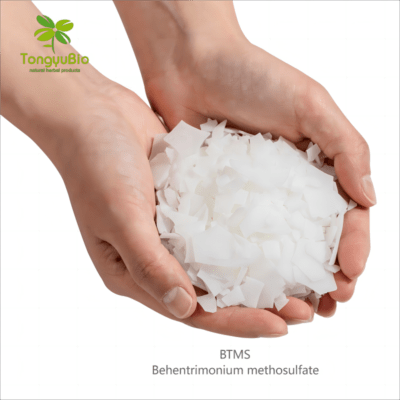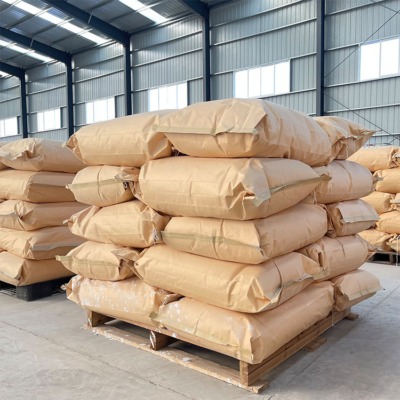General Details
Product Name: Docosyltrimethylammonium methyl sulphate, Behenyl Trimethyl Ammonium Methosulfate, BTMS
INCI Name: Behentrimonium Chloride
CAS#: 81646-13-1
Chemical Name: Docosyl(trimethyl)azanium;methyl sulfate
Product description
Behentrimonium methosulfate is also called Docosyltrimethylammonium Methyl Sulphate, which is known as BTMS, Behenyl Trimethyl Ammonium Methosulfate and and widely used in cosmetics and personal care products and perfumes & fragrances.
Behentrimonium methosulfate is a quaternary ammonium salt and acts as an emulsifier in hair and skin care formulations even for babies because of its natural sources.
In the middle of the 20th century, behentrimonium methosulfate became the perfect ingredient of shampoos and hair conditioning products because it can moisturize and condition hair to the roots. It penetrates up to the hair shaft making hair healthier and thus easy to comb and maintain. Other chemical additives may have the same property as behentrimonium methosulfate but are not as mild as well. In another side, behentrimonium methosulfate does not coat the scalp and leave excess chemical build up on the surface of the scalp but penetrates hair up to the roots.
There are two key functions that behentrimonium methosulfate plays in shampoo formulations.
As the cationic surfactant, behentrimonium methosulfate works as a surfactant in shampoo formulation through four mechanisms: roll-up, spontaneous emulsification, penetration and solubilization. The driving force causing the oil separation from the solid surface is the reduction in the interfacial tension of the sebum/water and hair/water interfaces created by the behentrimonium methosulfate surfactants. This allows the surface area of both interfaces to increase and drives sebum lipids to roll up into round droplets and detach from the hair surface. Once removed, lipid soils will tend to stay in solution, as the wet hair, wet with surfactants. Spontaneous emulsification is an extension of the roll-up mechanism.
In this case, behentrimonium methosulfate reduces the lipid/water surface tension and makes lipid soil to be formed, which can be easily removed. That is why behentrimonium methosulfate surfactant can emulsify the oils from large areas of lipid soil, which are too big to just roll up.
In the third mechanism, penetration mechanism, behentrimonium methosulfate can penetrate into insoluble lipid soils and produce liquid–crystalline phases at the soil–water interface. Agitation of the system is believed to pull away the loosened material, revealing a fresh layer of oily soil underneath, and so on. Finally, the fourth mechanism, the micelle mechanism of soil removal involves the transfer of lipid soil molecules from the surface of the soil into micelles adhering to the water/oil interface. This mechanism relies on the kinetics of micelle adsorption to the hair surface, lipid transfer into the micelle and, finally, detachment of the filled micelle back into the bulk solution.
As a quaternary ammonia salt, chemically, behentrimonium methosulfate has a positively charged head and is classed as a cationic, and will stay positively charged at neutral, acidic or basic pH, so behentrimonium methosulfate is often used as bactericides. It carries a positive charge at N atoms after being immersed in water solution and inflict a variety of negative effects on microbes. They adsorb onto phosphate containing cell walls of bacteria through an ionic interaction, penetrate the cell wall, and then attach to the cytoplasmic membrane, thus causing the denaturation of proteins and resulting in leakage of intracellular components and the death of bacteria. They are also found in many disinfecting hard surface cleaners since they do have antimicrobial characteristics.
Key attributes
Industry-specific attributes
| CAS No. | 81646-13-1 |
|---|---|
| Purity | 25%,50%,80% |
Other attributes
| Product name | Behenyltrimethylammonium methyl sulfate |
|---|---|
| Place of Origin | Sichuan, China |
| Usage | Cosmetic Raw Materials, Hair Care Chemicals |
| MF | C26 H57 NO4S |
| EINECS No. | 279-791-1 |
| Molecule weight | 479.81 |
| Densities | 0.92 |
| Appearance | White solid particles |
| Brand Name | Tongyu |
| pH | 5.0-7.0 |
| Free Amine,% | 0~2.0 |
| Packing | 25KG/Drum |
| Storage | Store in a cool and dry place |



